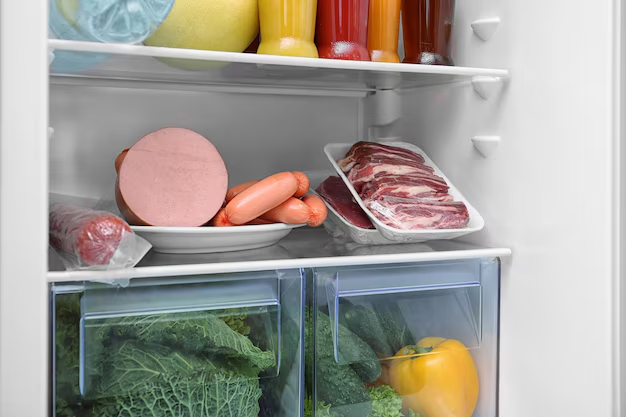How Long Does Sauerkraut Last in the Refrigerator? Your Complete Guide to Storage and Shelf Life
Whether you're a sauerkraut enthusiast, enjoy it sparingly, or are trying it for the first time, understanding how to properly store this tangy fermented food can make all the difference. Sauerkraut is cherished not only for its distinctive taste but also for its health benefits. However, like all perishable foods, it won’t last forever. So, how long is sauerkraut good for in the refrigerator? Let’s dive deep into the world of sauerkraut storage to ensure you’re always getting the freshest and most flavorful experience.
🕒 Understanding Sauerkraut's Shelf Life
What is Sauerkraut?
Before exploring its storage, it's important to know what sauerkraut is. Sauerkraut is fermented cabbage, often seasoned with salt and sometimes other spices or vegetables. This fermentation process creates beneficial bacteria called probiotics, which can aid in digestion and overall gut health. However, these live cultures also mean that sauerkraut requires careful storage.
How Long Does Sauerkraut Last?
In general, sauerkraut can last for several months in the refrigerator. The exact time frame largely depends on how it has been prepared and stored:
- Homemade Sauerkraut: Typically, homemade varieties may last for 4 to 6 months when stored in an airtight container in the fridge.
- Commercial Sauerkraut: Purchased sauerkraut, often pasteurized, can last longer. Once opened, it can remain good for several months, around 6 months on average.
The Role of Fermentation in Preservation
The fermentation process naturally preserves sauerkraut for extended periods. Lactic acid bacteria created during fermentation produce an acidic environment that inhibits the growth of spoilage-causing bacteria. This preservation method, traditionally used before refrigeration was common, allows sauerkraut to remain safe for consumption longer than many fresh vegetables.
🥶 Tips for Storing Sauerkraut in the Refrigerator
Proper Storage Containers
Choosing the right container is essential for preserving sauerkraut's flavor and probiotic benefits:
- Glass Jars: Perfect for homemade sauerkraut. Always ensure that the jar has a tightly sealing lid to maintain freshness.
- Plastic Containers: An option for storing sauerkraut, though they may retain smells. Ensure they are BPA-free.
- Original Packaging: If you've purchased sauerkraut, you can often store it in its original packaging. Just ensure it is sealed properly after each use.
Keeping Sauerkraut Fresh
Here are some actionable tips to maximize sauerkraut's shelf life:
- Maintain Consistent Temperature: Store at a stable, cold temperature in the lower part of your refrigerator.
- Prevent Cross-Contamination: Use clean utensils to extract sauerkraut and avoid contact with other foods.
- Minimize Exposure to Air: Always squeeze out excess air from containers before sealing them.
🛡️ Recognizing Spoilage: Is Your Sauerkraut Still Good?
Signs of Spoiled Sauerkraut
Even though sauerkraut can last for months in the fridge, it's important to recognize when it's time to say goodbye:
- Unpleasant Odor: A noticeable off-smell different from its usual tangy aroma.
- Mold Growth: Any visible growth suggests spoilage, even if it’s on the surface.
- Off-Color: Discoloration or a change in texture (e.g., becoming mushy) may indicate that it’s time to dispose of it.
- Slimy Texture: If it turns slimy, it's best not to consume it.
Trust Your Senses
When in doubt, trust your senses. The best way to determine if sauerkraut has gone bad is to rely on sight, smell, and even a small taste test (if it's visually sound). If it seems off, it's safer to err on the side of caution.
🌟 Additional Considerations for Sauerkraut Lovers
Nutritional Benefits
Apart from its delicious tang, sauerkraut is famous for its nutritional profile. It's rich in dietary fiber, vitamins C and K, and contains various beneficial enzymes. Fermented foods like sauerkraut also contribute to gut health due to their probiotic content.
Creative Culinary Uses
Tired of the same old side dish? Here are some inventive ways to incorporate sauerkraut into your meals:
- Toppings: Add sauerkraut to hot dogs, sausages, or sandwiches for an extra zing.
- Salads: Mix into salads for a crunchy texture.
- Soups and Stews: Use sauerkraut to enrich the flavors of your favorite soups.
- Stir-Fries: Toss in a handful of sauerkraut to enhance Asian-inspired meals.
🔍 Frequently Asked Questions
Does the Type of Sauerkraut Affect Its Shelf Life?
Yes, it does. Pasteurized sauerkraut, often found in canned versions, typically lasts longer than unpasteurized variants because the pasteurization process kills spoilage-causing bacteria. However, raw sauerkraut, found in the refrigerated section of stores, retains its probiotics and has a slightly shorter lifespan once opened.
Can Sauerkraut Be Frozen for Extended Storage?
Freezing sauerkraut is possible and can extend its life up to a year. Keep in mind that freezing may alter the texture slightly, making it less crunchy. To freeze, place sauerkraut in a container with a little room for expansion or use a freezer bag with excess air removed.
What Is the Best Temperature to Store Sauerkraut?
The ideal temperature is between 32°F and 39°F (0°C to 4°C). A consistently cold environment ensures the probiotics remain active while preventing unwanted bacterial growth.
📖 Quick Reference: Sauerkraut Storage Tips
Essential Takeaways
Here's a handy quick reference to keep your sauerkraut fresh and tasty for longer. Feel free to screenshot or print this for easy access in your kitchen!
- 📝 Use airtight containers: Opt for glass or BPA-free plastic.
- 🌡️ Keep refrigerated: Ideal temp is 32°F to 39°F.
- 🙅 Prevent cross-contamination: Use clean utensils!
- 🕰️ Observe the 'opened' timeframe: Typically 4-6 months at best.
- 🚫 Watch out for spoilage signs: Trust your sight, smell, and taste.
By understanding these principles and practical tips, not only will you enjoy your sauerkraut to its fullest potential, but you'll also likely find new favorite ways to incorporate it into your cooking. Enjoy the journey with this delightfully tart and historically significant food!
